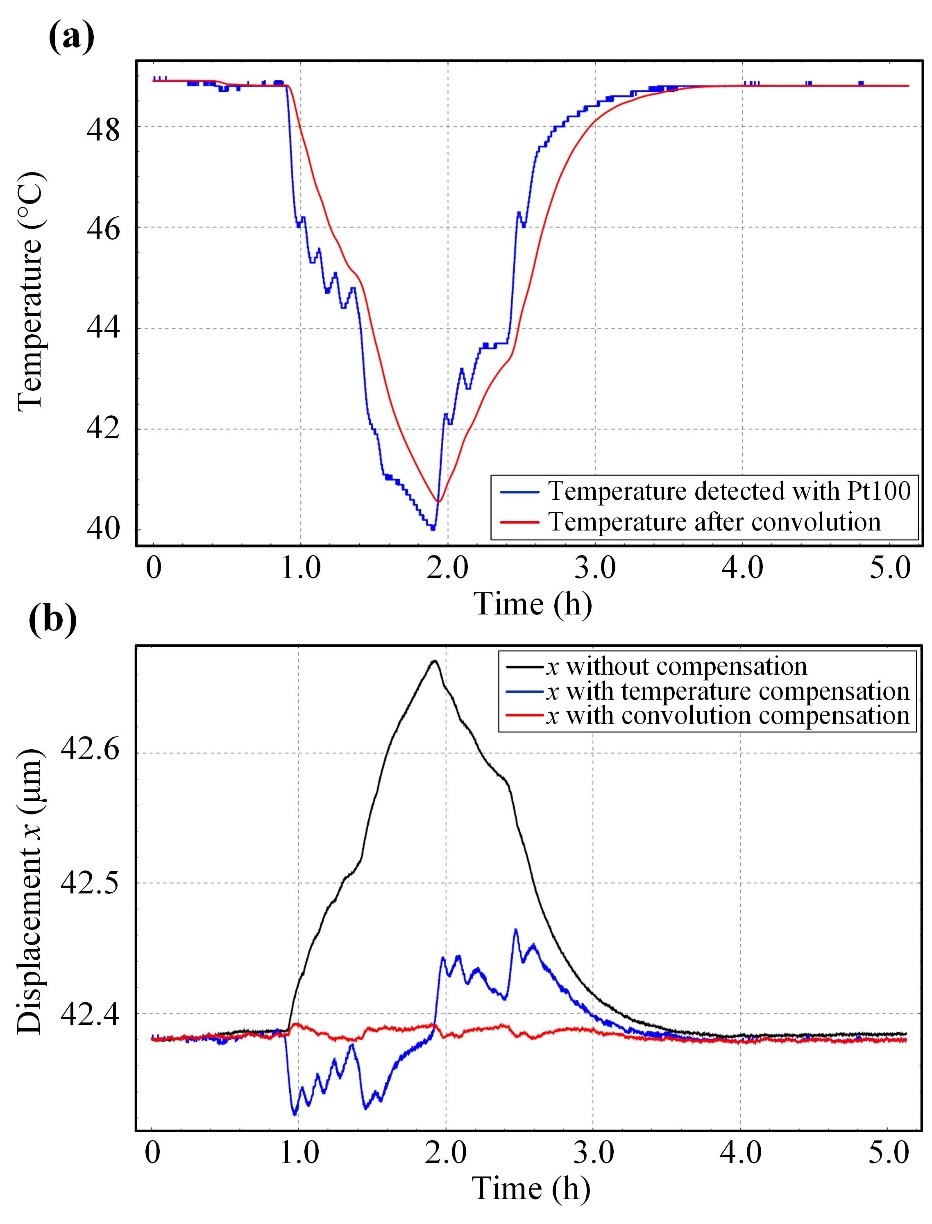
DIO: 10.1109/TIE.2020.3044777
Abstract
This article proposes a compensation method for precision sensors considering historical temperature states, which can significantly reduce the thermal drift of the sensors during rapid temperature change process. A typical differential eddy current sensor (ECS) measuring displacement is used as an example to explain the principle. By analyzing the source of thermal drift of the ECS, it is proved that time history of temperature change will also affect the output of the ECS. In this article, the temperature response characteristics of the sensing head of the ECS are obtained by the lumped capacitance method, and the output of the ECS is compensated by convolution operation. Experimental results show that the temperature coefficient of the ECS during a temperature change process is depressed from 34.62 to 1.64 nm/°C with this method, and it is also less than 1/4 of 7.70 nm/°C which is obtained with direct compensation using current temperature value. Furthermore, this method is expected to function efficiently for any precision sensor in complex and harsh temperature environments.
摘要
本文提出了一种考虑温度变化过程的精密传感器补偿方法,可以显著降低传感器在快速温度变化过程中的温度漂移。本文以一种典型的位移传感器——差分涡流传感器(ECS)为例,对该补偿方法进行了详细地说明,通过分析ECS温度漂移的来源,证明温度变化时程也会影响ECS的输出。本文采用集总热容法,获得了ECS探头的温度响应特性,并通过卷积运算对ECS的输出进行补偿。实验结果表明,该方法可以将ECS在温度变化过程中的温度系数从34.62 nm/℃降低到1.64 nm/℃,并且只有用当前温度值直接补偿得到的7.70 nm/℃的1/4。该方法有望有效地用于任何在复杂和恶劣的温度环境中工作的精密传感器。
图片摘要
在快速变温条件下对涡流传感器的温度特性进行了测试。从图中可以看出,若不进行补偿,传感器的温度漂移很大(黑色曲线,温漂为32.55nm/℃);若用当时时刻的温度进行补偿,传感器温度漂移降低,但仍有一些残留无法补偿(蓝色曲线,温漂为7.98 nm/℃);若用本文中提出的卷积补偿办法,则可以将这部分残留完全补偿,最终得到很小的温度漂移量(红色曲线,温漂为1.78 nm/℃)。

亮点:
提出利用卷积原理进行补偿的温度漂移补偿方法,考虑到温度变化过程对传感器输出的影响积累,可以用以补偿温度变化剧烈环境下传感器的温度漂移。







